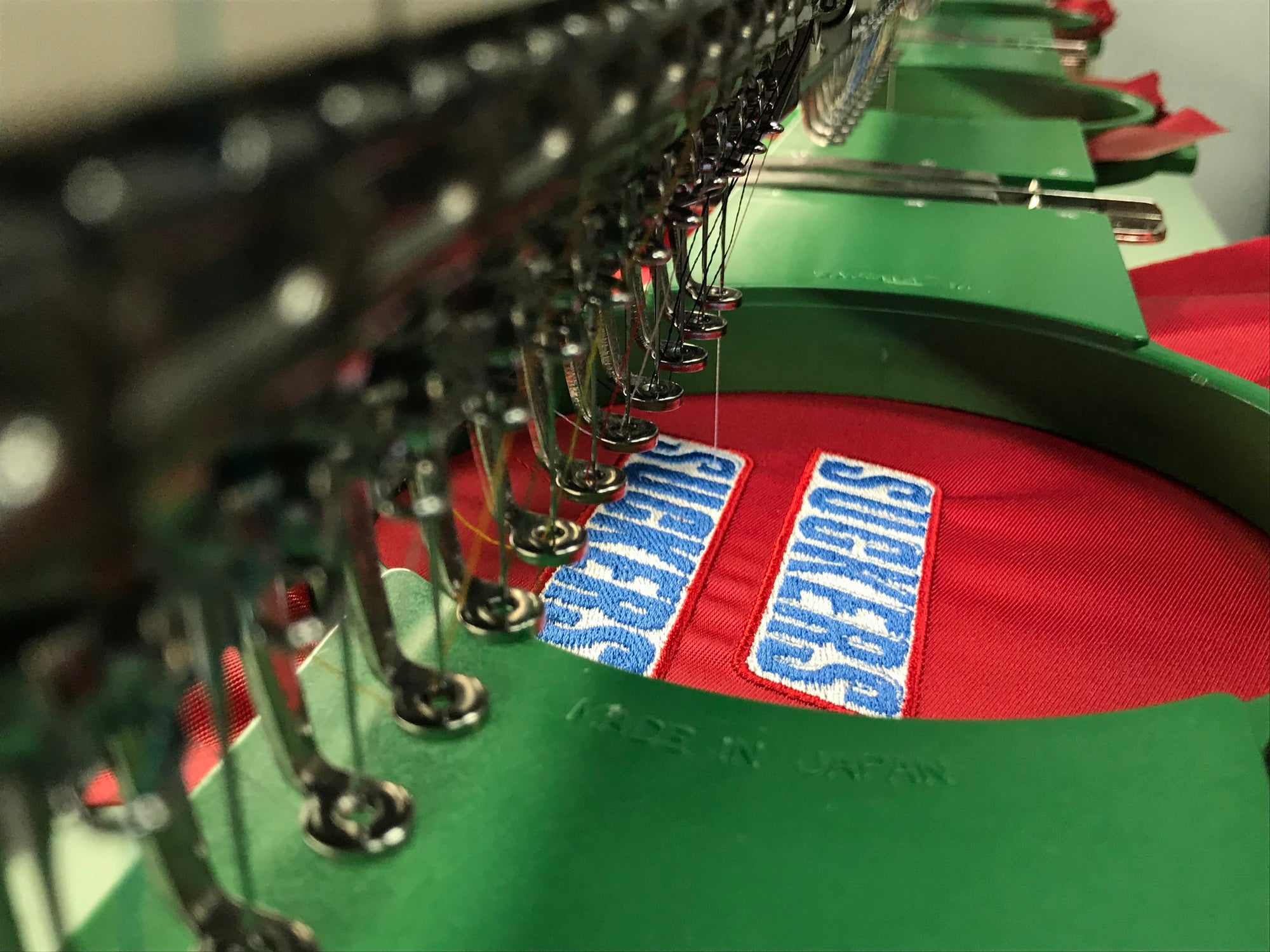

· By Otto Gossamer
The Patch-Making Process at Embify
Here at Embify, we make plenty of custom patches. Yet, have you ever wondered what the process of making patches entails? Let’s take a short trip through the process of how we make our products for our customers.
The first step is, of course, collaborating with the customer on size, artwork, the percentage of embroidery, and any other details that need clarifying. It's during this process that we also offer any advice on how to improve your patches if anything comes to mind. One fun example we had recently was about a customer who requested we make for them a patch of a fire department’s logo, pictured below.

We suggested that the patches be made appropriately fire-resistant! – but that’s just one fun little example of many pieces of advice we’ve given since we’ve been around.
Oftentimes when we converse with the customer, we find that some of them might not be aware of specifics. For example, there are materials which can change the entire aesthetic of a patch. Polyneon, for example, is extremely durable and smooth whereas Matte thread has a ceramic ingredient which prevents it from fading. It always helps to ask if you’re unsure of the embroidery process.
After agreeing with the customer comes all the heavy work. The second step is digitizing the file. This part seems straight-forward, but is not that easy: a file is created from the digitized high-quality image so that it can be understood by the embroidery machine. This allows the machine to “read” the image and punch the fabric accordingly using needles.
Once the design is done, comes the third step: upon completing the design, the machine needs to be threaded with the right colours. Embify has a large selection of colours so you don’t need to worry about whether or not we will be able to correctly match your digitized artwork with its required colours: that’s on us. The colours are then calibrated as per instructed in the file for the digitized artwork.
Now comes the fun part which is putting it all together. For the fourth step, we apply a needlework technique called appliqué which is a fancy word for sewing different shapes and patterns onto a larger piece of fabric. There is often contrast between the different layers. Twill, a textile weave with a pattern of diagonal parallel ribs, is sowed in a layered fashion. Then, it’s time to fire up the heat press: the layers are combined together with the help of hot temperatures and adhesive.
The final and fifth step is the clean-up. We remove any excess fabric and then cut out the actual patch from the fabric. This is delicate process because the edges need to be just right. Personally, we don’t use a hot knife to cut out the patch because we find that it’s not as effective as cutting by hand. This is because the hot knife can burn the threads that make the edges hold together. Therefore, you get the nice personal touch with each patch, from us.
And then... we’re done! We proceed to ship your newly-made custom patch(es), or you can pick them up from us in Horley.
If you’re interested in making some custom patches yourself, send over a quote request.
